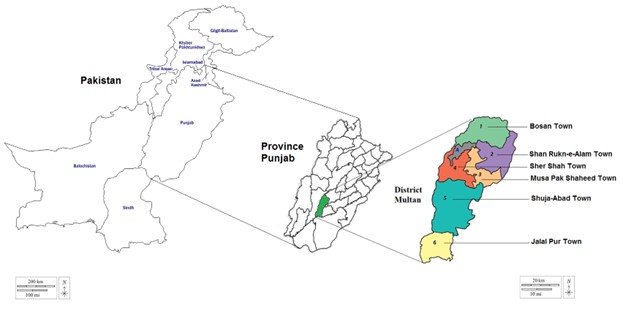Evaluating serum electrolyte and trace element variations between Babesia ovis-infected and uninfected Lohi sheep
Authors: Muhammad Sajid, Syed A. H. Naqvi, Muhammad W. R. Marral and Mourad Ben Said
Ger. J. Vet. Res
2024.
vol. 4, Iss. 2
pp:75-87
Doi: https://doi.org/10.51585/gjvr.2024.2.0086

Abstract:
Babesiosis caused by Babesia ovis is a major threat to the livestock industry worldwide. In Pakistan, the Lohi sheep breed is an important economic resource, but limited information is available on the impact of B. ovis infection on this breed. This study aimed to investigate the serum electrolyte and trace element variations between B. ovis-infected and uninfected Lohi sheep from Pakistan. A total of 97 Lohi sheep was stratified based on the geographical distribution of Multan district, employing a multistage cluster sampling method. Blood and serum samples were collected from randomly selected sheep, and DNA extraction and PCR amplification were performed to detect B. ovis infection. Serum electrolyte and trace element levels were analyzed in infected (n=67) and uninfected (n=30) groups, stratified by age and gender. The study revealed a 69.07% overall infection rate of B. ovis in Lohi sheep. Infected sheep showed significantly elevated serum copper levels (p<0.0001), with no substantial differences observed in serum iron, sodium, potassium, and chloride levels. However, age-wise variance analysis revealed statistically significant variations in sodium and potassium levels (p<0.0001 and p<0.05, respectively). Notably, serum chloride levels differed between infected and uninfected females in individuals younger than two years (p<0.05). Serum iron levels remained consistent across different age groups. Comparative analysis indicated a higher prevalence of electrolyte imbalances, such as hyponatremia, hyperkalemia, hyperchloremia, and hypoferremia, in infected sheep compared to normal reference ranges, while instances of hypernatremia, hypokalemia, hypochloremia, and hyperferremia were less frequent. In conclusion, our study suggests that B. ovis infections could lead to alterations in serum electrolyte and trace element levels in Lohi sheep, emphasizing the importance of further research into the specific mechanisms driving these alterations to enhance disease management strategies tailored to this breed.
Keywords:
Babesia ovis, Molecular identification, Serum electrolytes, Trace elements, Sheep infection, Pakistan
Statistics:
Article Views: 979
PDF Download: 19